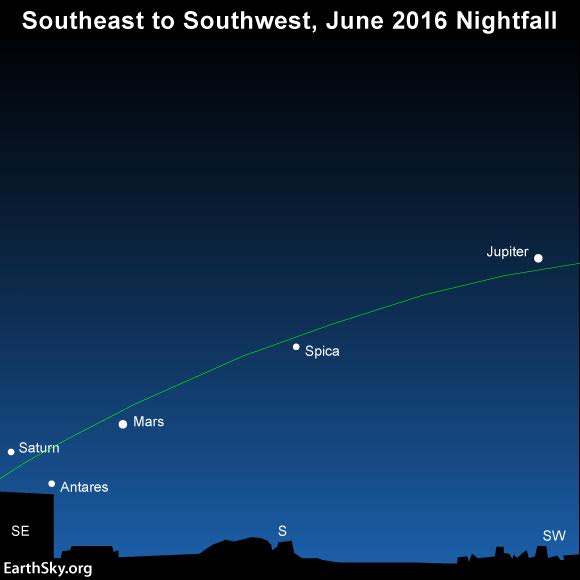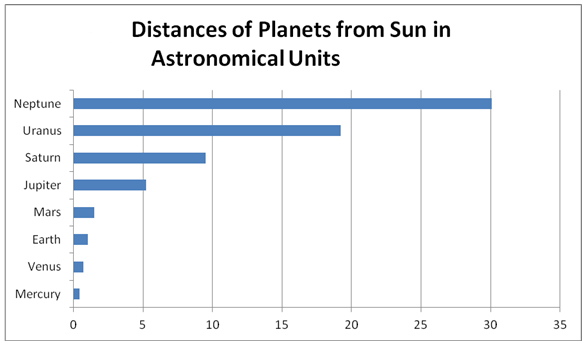Tonight – June 15, 2016 – if you look along the zodiac, or the sun’s annual path across the starry sky, you’ll find the moon sandwiched between the red planet Mars and bright star Spica. Mars is much redder and brighter than Spica, which shines blue-white.
As the moon makes its monthly rounds in front of the constellations of the zodiac, it swings near Spica regularly. Although sparkling blue-white Spica ranks as a 1st-magnitude star – that is, one of our sky’s brightest stars – it’s no match for the ruddy planet Mars right now. We passed between Mars and the sun on May 22, and Mars still shines brightly, some 12 times more brilliantly than Spica, which is the constellation Virgo’s brightest star.
Mars, in the meantime, is currently shining in front of the constellation Libra. Because Mars (and all the planets) travel much more slowly than the moon does in front of the backdrop stars of the zodiac, look for the moon to catch up with Mars in a day or two, and to couple up with the planet Saturn on or near June 18.

Planets that orbit the sun outside of Earth’s orbit are called superior planets. The farther that the planet resides from the sun, the more slowly that planet travels in its longer orbit around the sun. Therefore, Mars – the fourth planet outward from the sun – passes full circle in front of the constellations of the zodiac in much less time than Saturn does.
Saturn, the sixth planet outward, lies about six times Mars’ distance from the sun, which means that Saturn’s orbit is about six times larger than that of Mars. And with Mars traveling about 2.5 times faster than Saturn (24.1 km per second versus 9.7 km per second), that means Mars takes about 1.88 Earth-years to go full circle through the zodiac full whereas Saturn takes 29.46 Earth-years.

Mean distance in astronomical units (AU) to each planet.
Mercury: 0.387 AU
Venus: 0.723 AU
Earth: 1.000 AU
Mars: 1.524 AU
Jupiter: 5.203 AU
Saturn: 9.582 AU
Uranus: 19.201 AU
Neptune: 30.047 AU
Source: Planetary Fact Sheet
Therefore, look for Mars to catch up with Saturn in the great race of the planets. Sure enough, Mars will lap Saturn in a few months, and these two worlds will stage a rather close conjunction on the sky’s dome on August 25, 2016.
Want to know more? See NASA’s Planetary Fact Sheet
Bottom line: Use the moon to find Spica and Mars tonight – June 15, 2016 – and then watch for the moon to pair up with Saturn on June 18.












